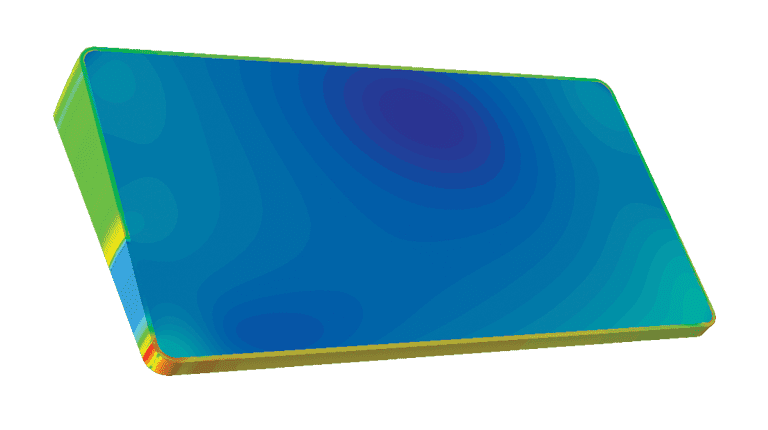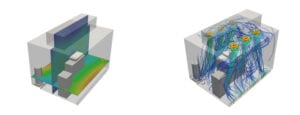
Founded in 1986 in Houston, Texas, Stewart Technology Associates (STA) is a technology consultancy specializing in marine and offshore structures, fluid dynamics and many other diverse services and systems. STA brings over 40 years experience in civil, structural engineering, naval architecture, with emphasis on structural dynamics, marine hydrodynamics, soil mechanics, offshore field development strategies, and development of novel structures.
Taking advantage of STA’s significant experience in naval engineering, a customer requested their services for the validation of an articulated navaid’s (navigational aid) design. The investigation has indicated several areas of improvement. One of the concerns for a proper operation of the navaid was the choice of floats that stabilize the device. STA pointed out that the originally selected floats would be prone to damage when operating at designated depths. This was confirmed by the customer during the first live tests and resulted in significant costs and damages. To avoid further problems, the customer reached out to STA to get guidelines for the required modifications to the floats.

The traditional approach of designing naval floats involves spreadsheet calculations that provide a basic overview of the device’s performance, with little reliability. Despite being a relatively simple object, precise calculations of the float’s performance are impossible to be done by hand. It was needed to incorporate finite element analysis (FEA) as a key tool.
STA chose SimScale for the finite element analyses due to a combination of attractive pricing structure, reliability of results and comprehensive assistance from the SimScale team.
The platform provided a reliable and easy-to-use cloud-based solution that allowed a quick progress. The project was realized in 4 steps, each of which involved direct assistance from the SimScale team in workflow preparation followed by multivariable analyses performed by STA. Overall, thanks to using SimScale as a partner and a simulation tool, STA was able to reduce the cost of the project tenfold.
Thanks to the use of FEA with SimScale, we helped our customers design a reliable articulated navaid and save 30% of their manufacturing costs.

William Stewart
Founder and President, STA
With the naval float operating 10-20m below sea level, it needed to sustain pressures of up to 30 bar. Two major factors were taken into account when analyzing the design of the naval float: the thickness of the outer polyethylene shell and the properties of polyurethane foam used for filling. In addition, geometry modifications were studied to reduce deformation and stress.

The first variable optimized was the thickness of the polyethylene shell. A thicker external shell would be stronger but this would result in an increase of manufacturing costs. Three thickness configurations were investigated throughout the project.
A significant part of the structural integrity of the float is provided by the polyurethane filling. The material used needed to be as light as possible, at the same time strong enough to withstand the stresses caused by the external shell deflection. The use of simulations allowed to check the performance of different polyurethane mixtures without having to manufacture them.

During the project, four optimization iterations were undertaken. The first one involved a general study of the original design. The next step facilitated the change in external shell thickness and geometry changes to the naval float’s edges. The third iteration validated the selection of the simulated fixed conditions and the final part revolved around further modifications of the design properties.

To ensure the results’ accuracy in all simulations, second order tetrahedral meshes of around 1.2 mln nodes were used. Overall, over 30 variants of simulation setups were calculated, analyzed and compared. Thanks to the use of finite element analysis, Stewart Technology Associates provided their customer with reliable guidelines and requirements for the floats used in their articulated navaid. It turned out that the stiffness of the polyurethane filling needed to be 75 times higher than the original material choice and the thickness of the outer shell had to be increased by 16%. At the same time, the use of FEA compared to conservative hand calculations allowed the end customer of STA to save 30% of manufacturing costs.
It turned out that the stiffness of the polyurethane filling needed to be 75 times higher than the original material choice and the thickness of the outer shell had to be increased by 16%.


Sign up for SimScale
and start simulating now